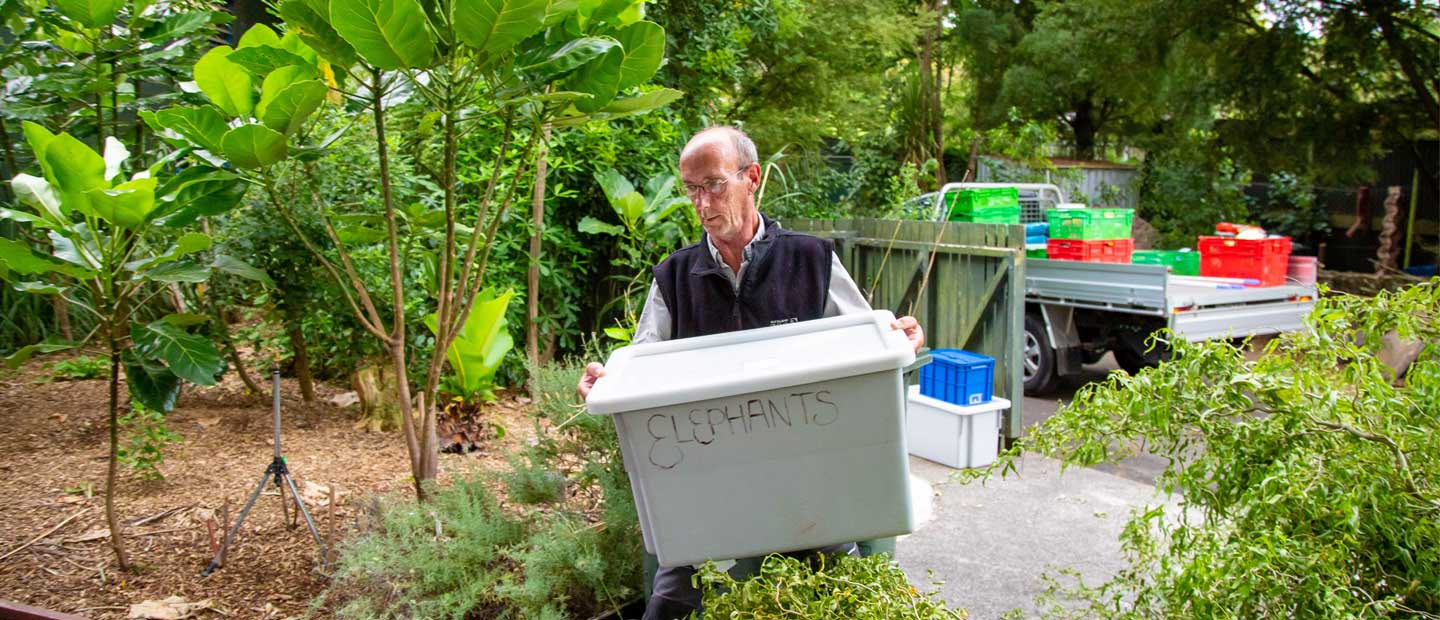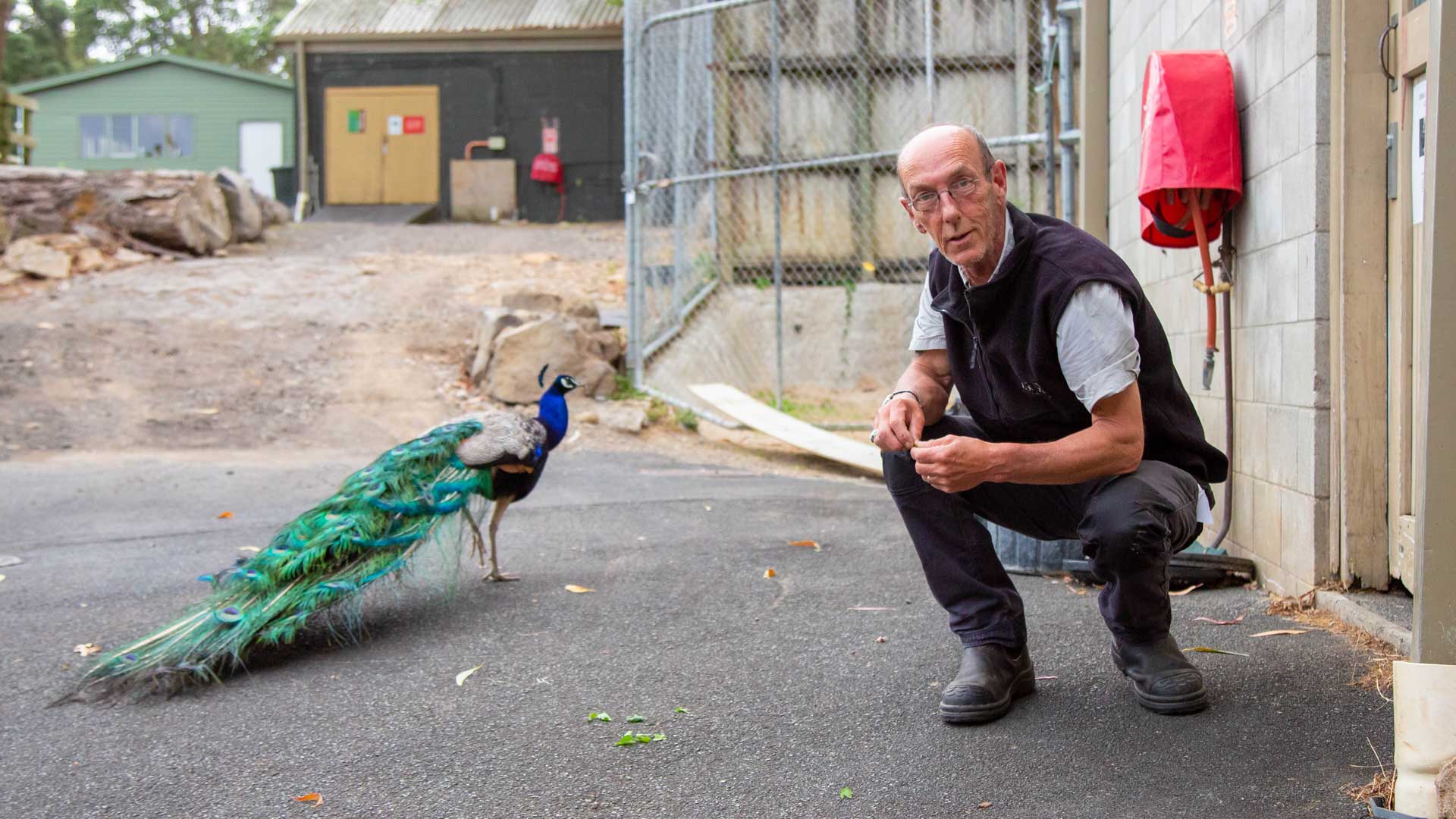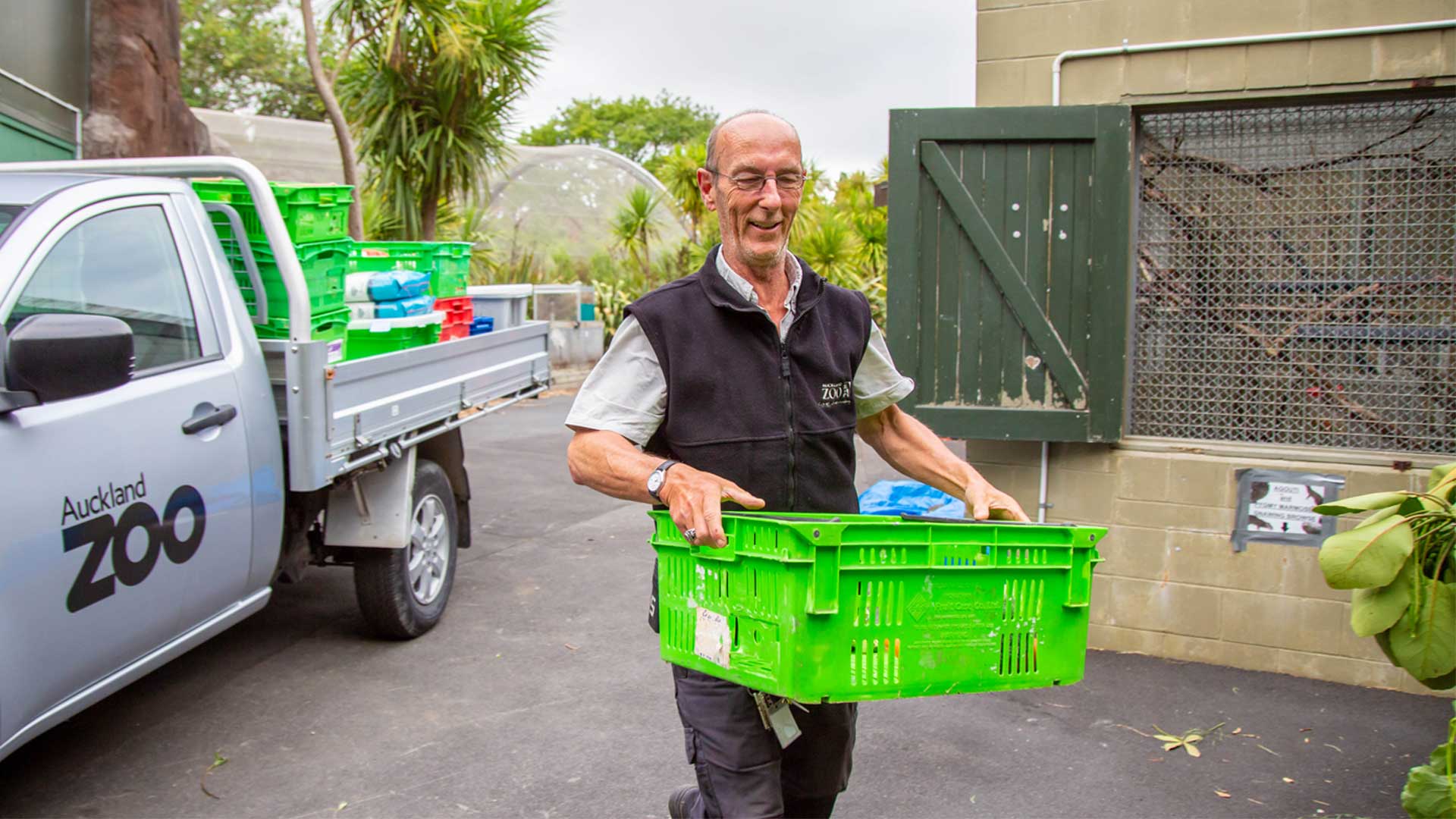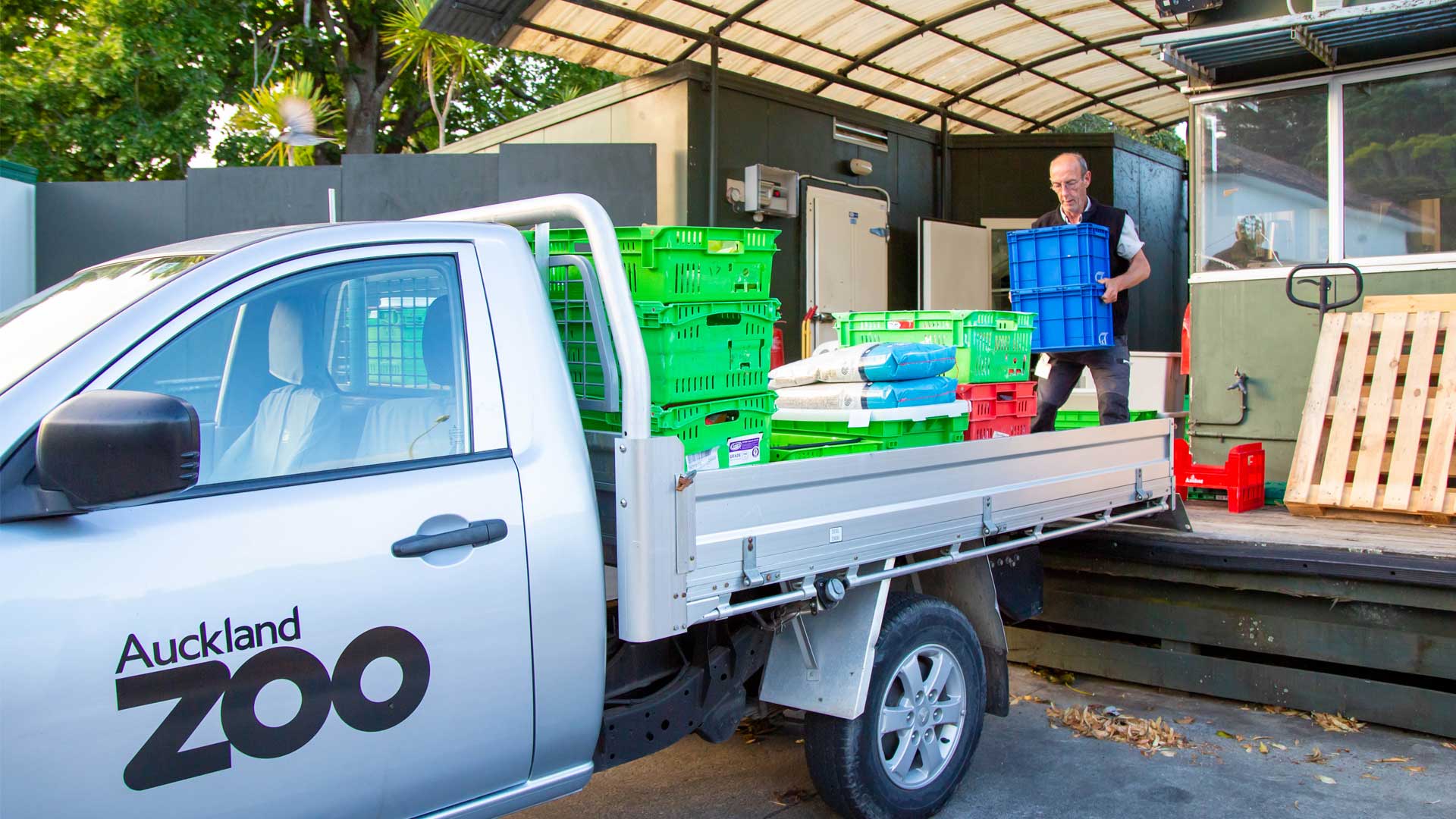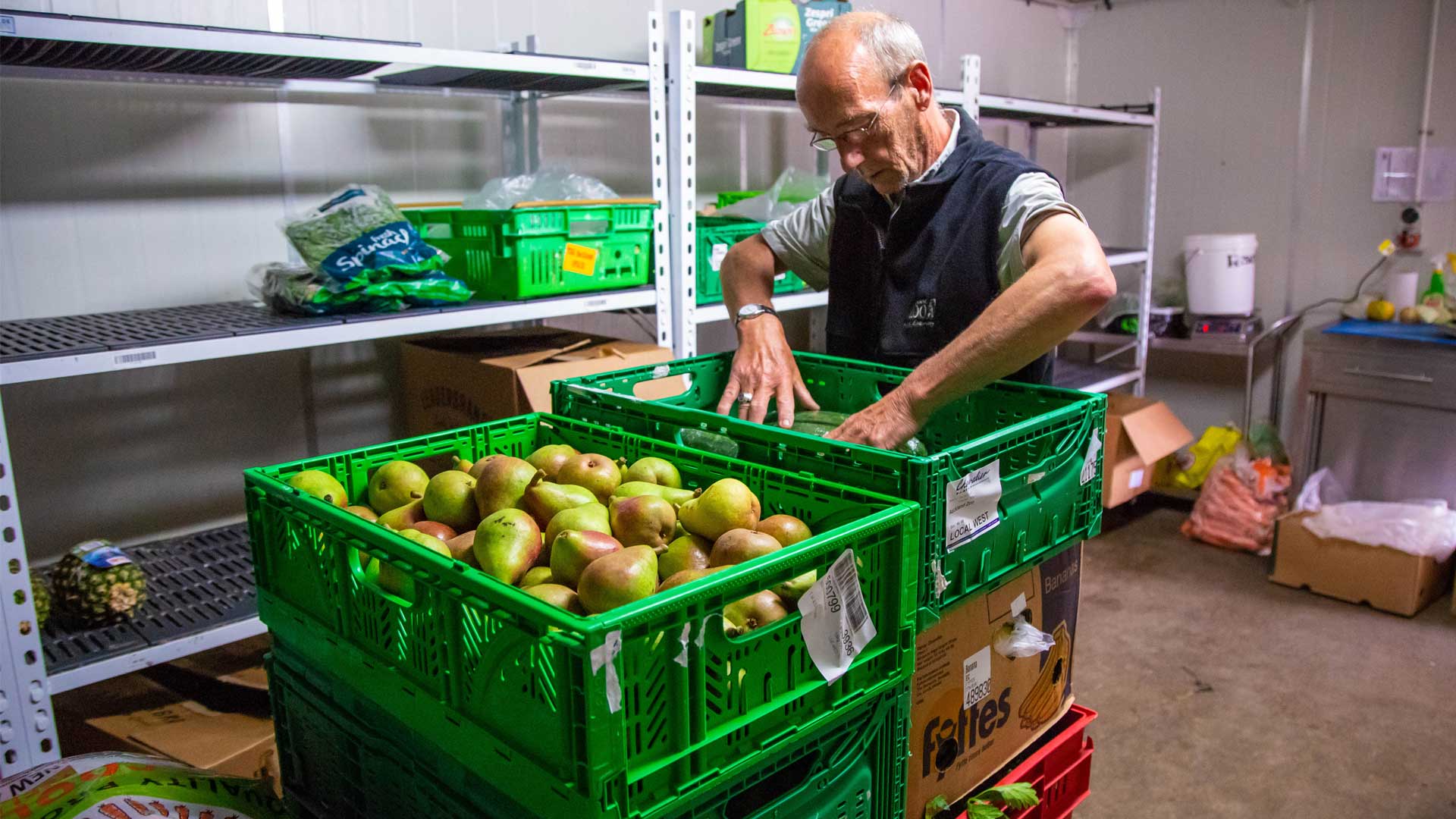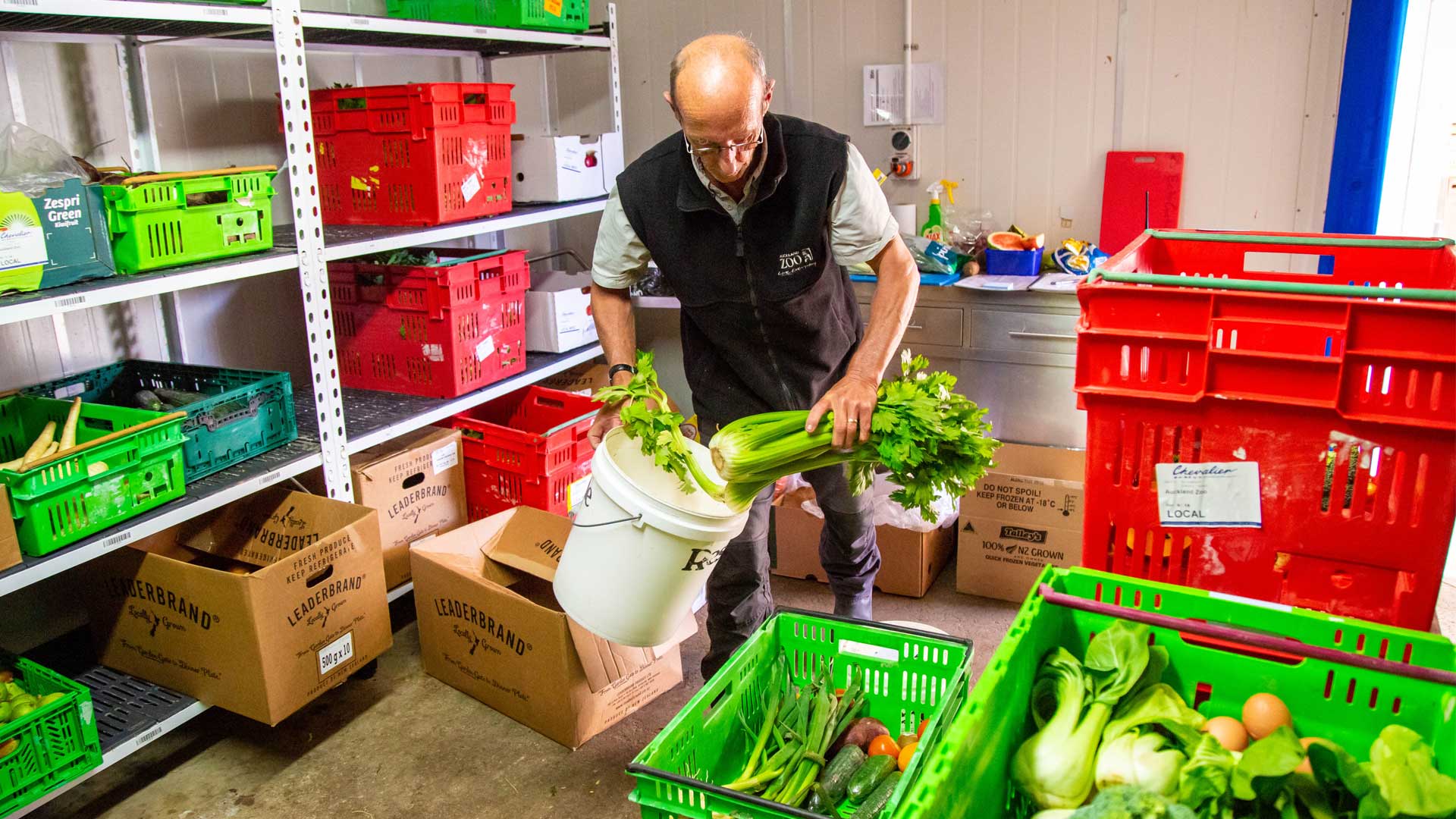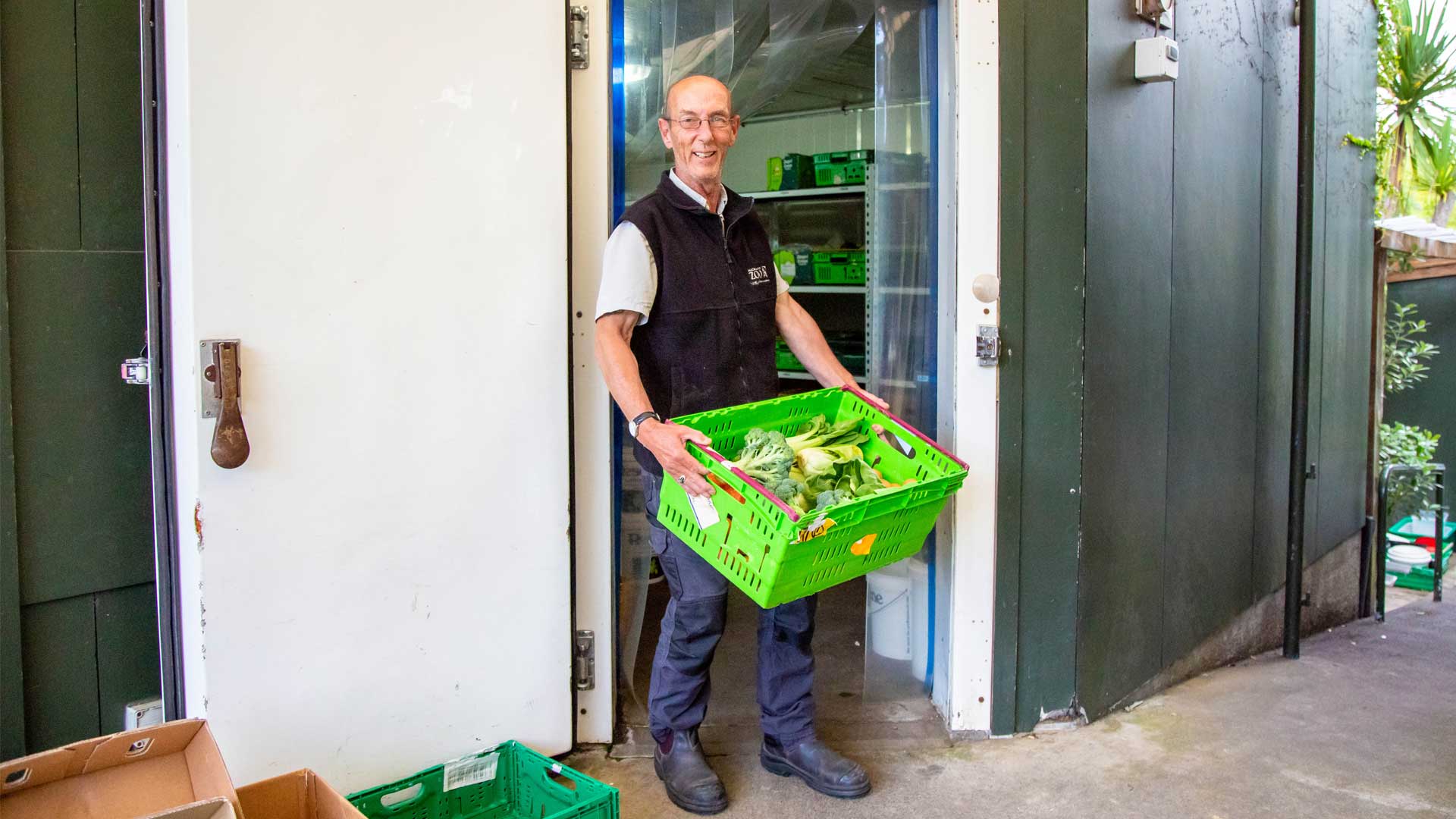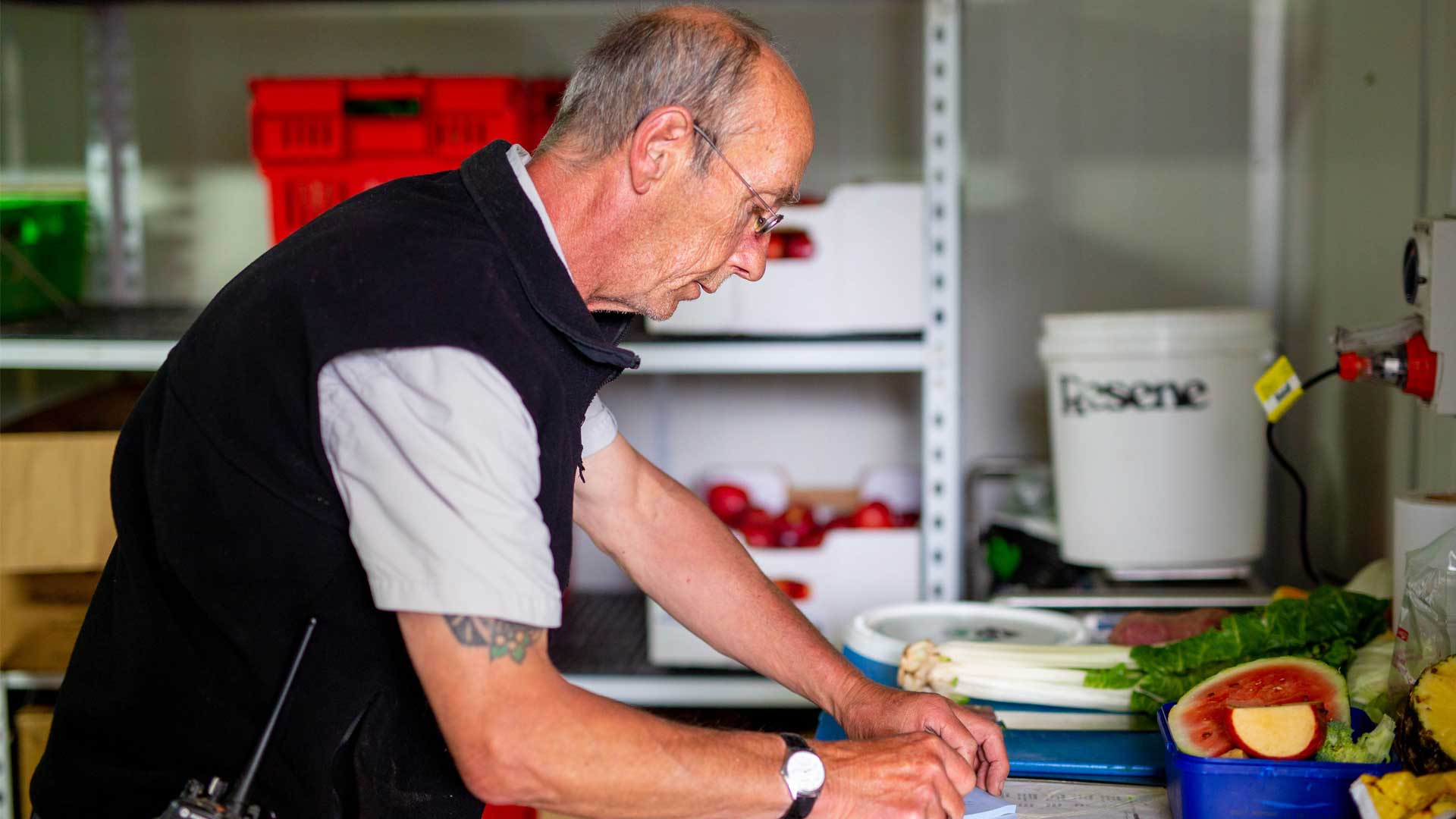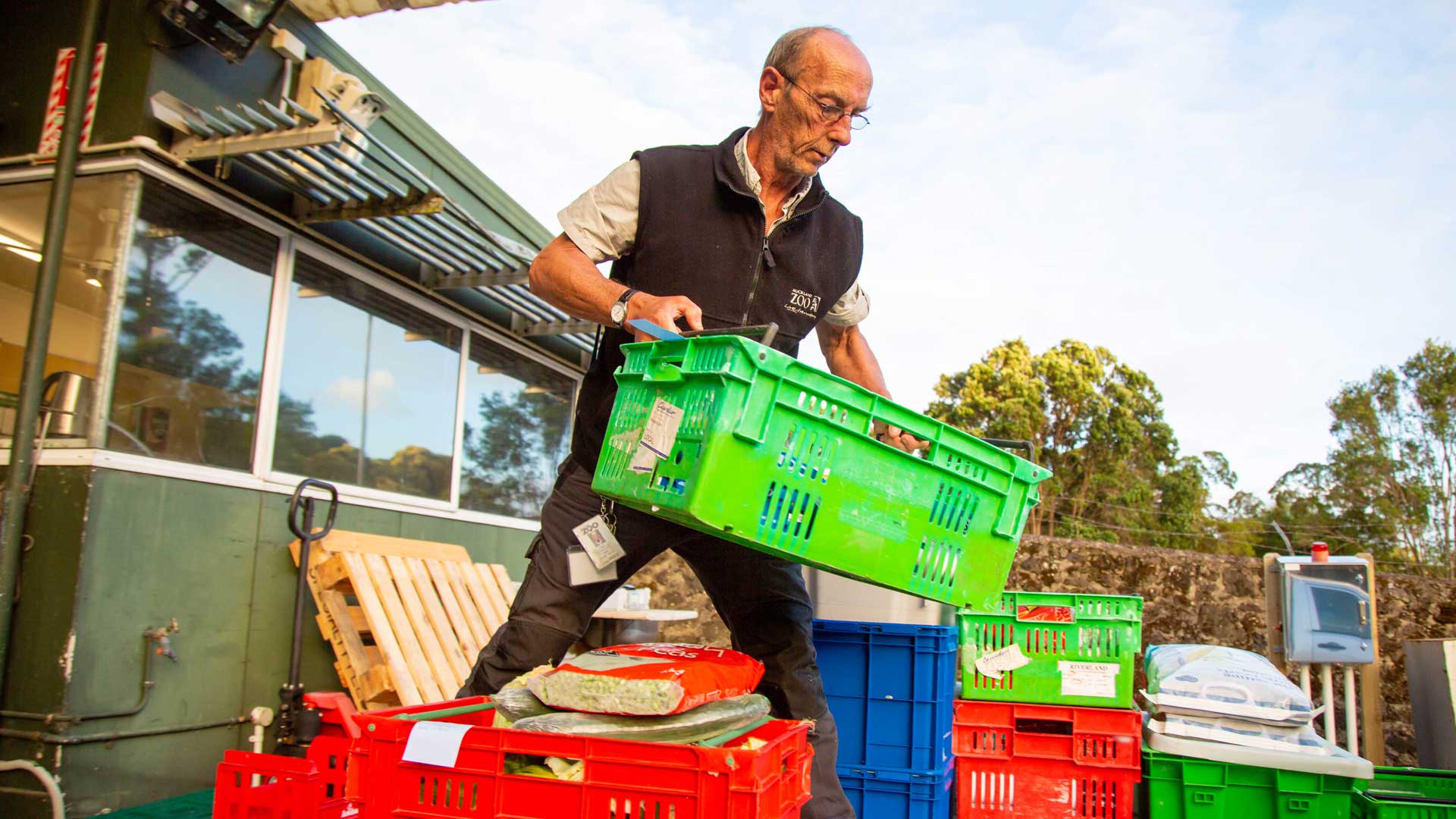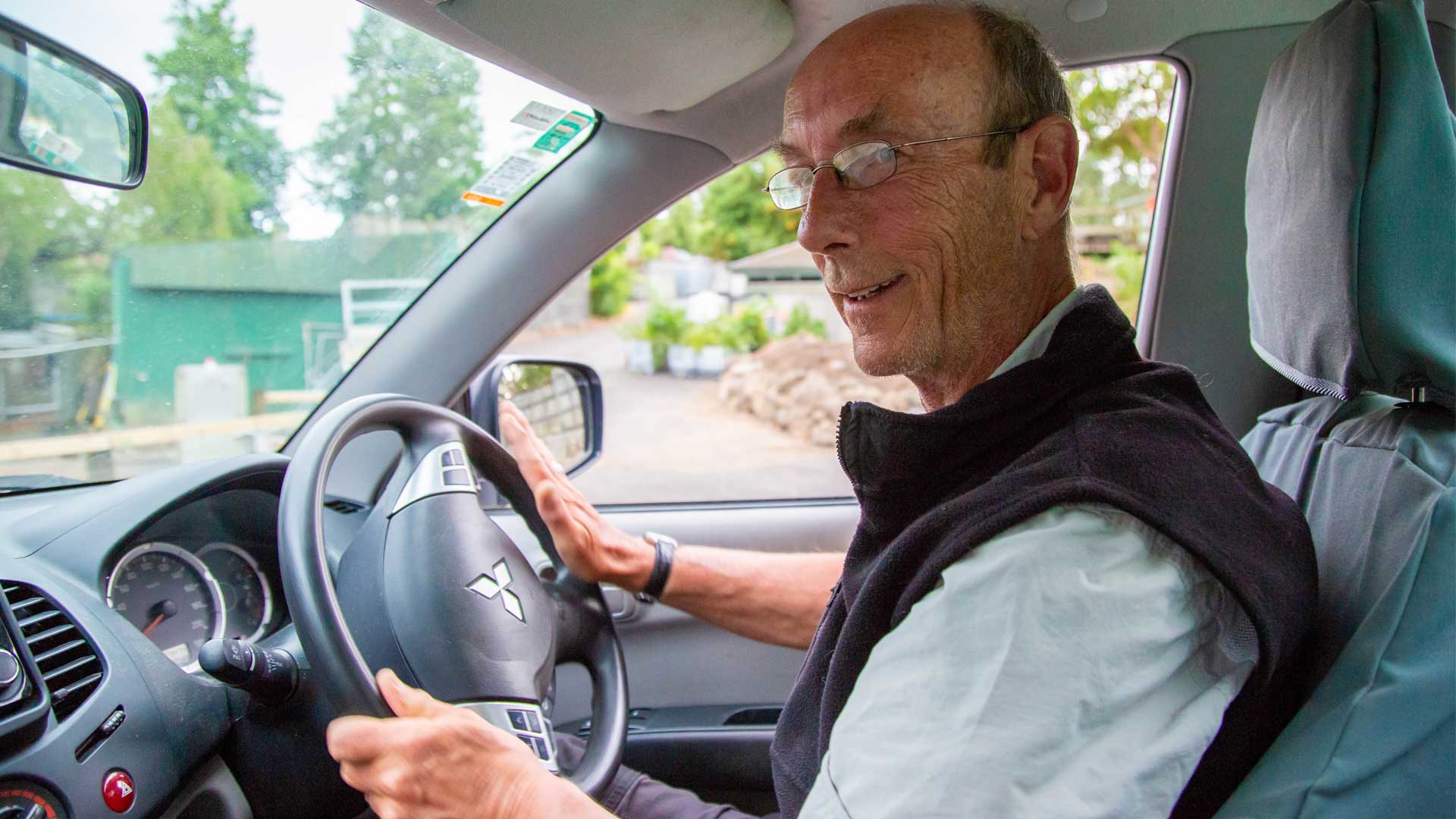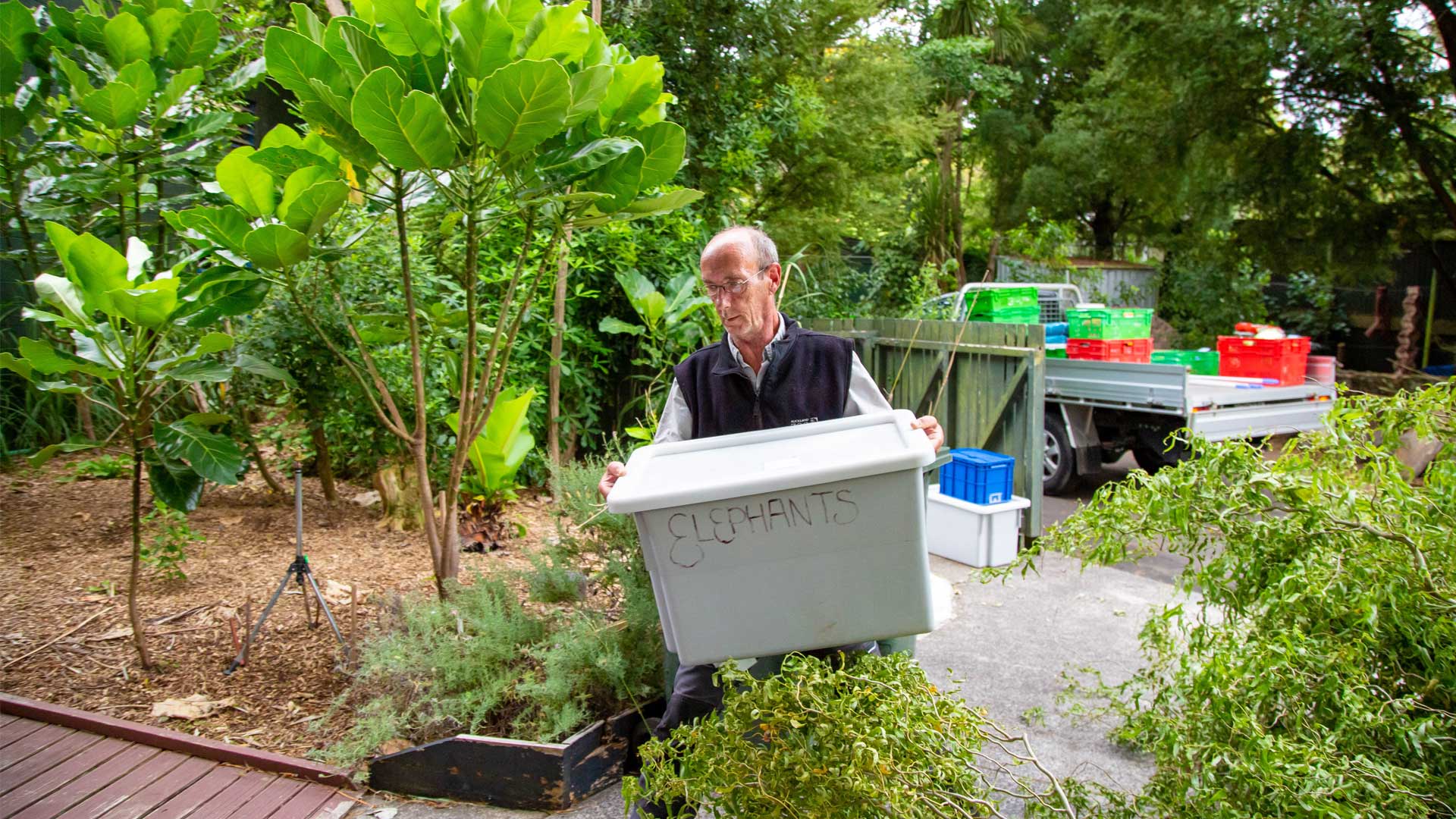Our Zoopermarket
Ian describes his office as an “open-all-hours Zoopermarket”. It includes a cool store, dry goods store (for spices, herbal teas, pellets, nuts, seeds, cleaning products, even pregnancy test kits keepers require for primates), a walk-in freezer, office for desk work, and a loading bay. It’s here on a Wednesday around midday when live insect deliveries (crickets, locusts and beetle larvae for our insect-eating animals) come in, that he’ll often find his favourite Zoo animal, Harold, our free-ranging peacock, has come to visit.
“Harold just seems to know when the insects arrive. Once unloaded, you can usually hear them fluttering inside the boxes. More than once I’ve caught Harold unsuccessfully trying to peck through a box,” says Ian, whose office is also used by Harold on hot days for a “wee rest”.
Journey to the Zoo
Born in England, Ian grew up in Doncaster and spent 16 years in the army. His time in the famous regiment, the Coldsteam Guards, saw him serve in Germany, Northern Ireland, Gambia, Canada, Hong Kong, and even the Falklands Islands.
As a Coldstream Guard there were also Royal duties at the Tower of London, St James Palace, and Buckingham Palace, where on 29 July 1981, the royal wedding of Prince Charles and Lady Diana, he spent four hours moving 10 paces to his left and right!
Why Auckland Zoo? After marrying a Kiwi, moving to New Zealand and working for 15 years at Auckland Airport in a security role that required a lot of shift work, Ian decided it was time for a change.
“One day I spotted an advert in the paper for a store person at Auckland Zoo. It wasn’t so much about it being at a zoo, it was the lack of shift work that really attracted me. Eleven years on, and the rest, as they say, is history,” says Ian.
“What I love about this job is that because I’m making up different animal diets each day, no one day is the same. I get to build relationships with suppliers which really helps, and the keepers are very good. Plus, I never know what someone will order. Some items can be tricky to track down. Some days a crystal ball would be brilliant!”


